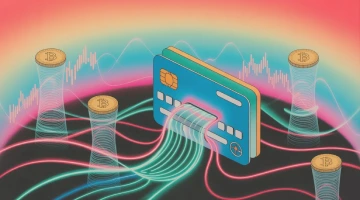What is Runes Protocol

In the continually evolving nature of blockchain technology, the emergence of new protocols often signals significant changes in the way digital assets are created, managed, and exchanged. The Runes Protocol is a groundbreaking innovation in token development within the Bitcoin network. This guide explores the features, mechanics, and implications of the Runes Protocol, including its unique characteristics, the underlying UTXO structure, and the streamlined processes for token transfers and issuance.
The Emergence of Runes Protocol
Bitcoin Runes are fungible tokens issued directly on the Bitcoin network. The Runes protocol was presented in September 2023, as a simplified and more efficient alternative to the experimental BRC-20 standard for fungible tokens development.
Initially, BRC-20 tokens gained rapid popularity after their launch in March 2023, reaching a staggering market cap of $1 billion within three months. However, their widespread adoption led to an accumulation of "junk" UTXOs, causing network congestion.
In response, Runes protocol was designed to address this issue by implementing a UTXO-based approach that aims to curtail the generation of unnecessary UTXOs. Unlike other token protocols for Bitcoin, such as Taproot Assets Protocol and Counterparty, Runes operates without the need for off-chain data or a native token.
It's important to do your own research so you don't confuse THORChain's native token, RUNE, with the Runes protocol.
Read our thorough article with a comprehensive exploration on BRC-20 and Runes: Token Creation on Bitcoin: BRC20 and Runes!
Features of Runes Protocol
Exploring the technical features of the Runes protocol in Bitcoin unveils enhancements to user experience and a potential paradigm shift in token development.
1. UTXO-based structure
Runes operate within the native UTXO model of Bitcoin, effectively mitigating the proliferation of "junk" UTXOs and consequently reducing the on-chain footprint, enhancing network efficiency.
2. Simplified token management
In contrast to other protocols like Ordinals and Stamps that introduce additional data into transactions, Runes offer a streamlined approach, alleviating blockchain scalability and performance concerns associated with excessive data storage.
3. User-friendly protocol design
Runes prioritize simplicity, fostering wider token developer engagement and catalyzing innovation within the Bitcoin community. This simplicity also facilitates mainstream adoption by eliminating the need for handling native tokens or navigating off-chain complexities, thereby enhancing the overall user experience.
4. Flexible assignment and transfer of balances
Leveraging OP_RETURN transactions and additional data pushes, Runes enable flexible assignment and transfer of balances. Moreover, invalid protocol messages result in the burning of Runes, safeguarding against potential vulnerabilities and ensuring the integrity of future upgrades.
The opcode OP_RETURN is used to indicate that the output is not provably spendable, and is used to hold data within the transaction.
For deeper insights into the Runes protocol, check out Casey Rodarmor's blog, where the developer of the Runes shares invaluable insights.
Overall, the Runes protocol presents a compelling solution for managing tokens on the Bitcoin blockchain. With its focus on minimizing excess outputs, streamlining token management, and enhancing Bitcoin user experience, Runes hold the promise of reshaping the landscape of token development within the Bitcoin ecosystem.
What Are UTXOs?
Unspent Transaction Outputs (UTXOs) play a crucial role in blockchain-based protocols like Bitcoin, serving as a fundamental technique for monitoring balances during transactions between cryptocurrency wallets.
Unlike the Account/Balance model utilized by projects such as Ethereum and Tezos, Bitcoin, alongside other cryptocurrencies like Litecoin and Dogecoin, relies on the UTXO model.
In the context of token development, understanding the role of UTXOs is essential. When considering the creation and management of tokens on blockchain networks like Bitcoin, the UTXO model provides a foundational framework. Tokens built on Bitcoin's UTXO model inherit its characteristics, including the decentralized and transparent nature of transactions. Furthermore, the utilization of UTXOs in token transactions ensures that balances are accurately tracked and that token transfers occur seamlessly within the network.
How it Works?
When initiating a Bitcoin transaction, your wallet scans the blockchain for available funds, represented by UTXOs, which can be conceptualized as akin to residual change from prior transactions. These UTXOs, considered "unspent," are freely usable and constitute the transaction outputs originating from preceding transactions. Essentially, UTXOs facilitate transactions by serving as inputs for new transactions, thus perpetuating the circulation of cryptocurrency.
Each UTXO possesses distinct attributes including a fixed value, association with a bitcoin address, and a unique transaction ID. Within the cryptocurrency ecosystem, UTXOs are viewed as essential components for token development, enabling the seamless transfer and management of digital currency while maintaining network integrity and accounting transparency.
Inscriptions
The functioning of Inscription technology involves several protocols, including BRC-20, Atomicals Protocol, Runes, and Pipe, which share common underlying principles.
Inscriptions represent a significant advancement in token development, opening up new avenues for data storage and NFT creation. They offer creators and collectors the opportunity to build and own immutable and dynamic items in truly groundbreaking ways, leveraging on-chain programmability, decentralization, and security advantages over traditional NFT counterparts. By inscribing data directly onto the blockchain, inscriptions gain independence from external servers and single-entity control, enhancing transparency and decentralization.
This innovation marks a crucial step towards democratizing token development, empowering individual users to create and own unique digital assets on the blockchain. The fair-mint processes enabled by inscriptions have spurred the rapid growth of token communities, fostering inclusivity and participation within the ecosystem. Compared to traditional methods such as Initial Coin Offerings (ICOs), which often require heavy regulation, inscriptions provide a more transparent and inclusive distribution mechanism. This open-access approach contrasts with conventional routes dominated by institutions, leveling the playing field and empowering individual investors to participate alongside institutional players.
As various inscription standards emerge, their impact on the wider web3 ecosystem becomes increasingly apparent, with inscriptions driving accessibility and user engagement.
By adhering to standardized specifications and operations, these protocols ensure interoperability and efficiency across different platforms and systems, enabling seamless token management and transactions within decentralized ecosystems.
Runes Transfers
The protocol message decodes the first data output into a sequence of integers that represent (ID, OUTPUT, AMOUNT) tuples. If the decoded integers are not a multiple of three, the message is invalid. ID refers to Token ID, OUTPUT indicates the output index to assign to, and AMOUNT represents the quantity to allocate. Once all tokens are allocated, any remaining Runes Tokens can be assigned to the first non-OP_RETURN output. Unused tokens can be burned. When using witnesses, the Ordinals protocol can become complex. For example, in a transaction with two inputs, each input has a signature, and additional data can be added to the witness for each input. Using OP_RETURN instead of the transaction's witness section avoids this issue with Runes.
This distinction also means that Runes and the Ordinals protocol are independent. Simplifying development by removing mutual dependencies has its advantages, but it also means that Runes cannot benefit from the existing user base and decentralization of Ordinals, which can make node launches more challenging.
Runes Issuance
In the world of token development, Runes introduce a unique approach to issuing and tracking tokens using the UTXO model. When a protocol message includes a second data push, it means there's an issuance transaction. This data push is decoded into two numbers: SYMBOL and DECIMALS. If there are any extra numbers, the message is invalid. SYMBOL is like a simple letter used to represent the token. DECIMALS tells us how many numbers come after the dot in the token's value. If SYMBOL hasn’t been used before or is not BITCOIN, BTC, or XBT, a new token is created.
Here's where Runes stand out: instead of connecting token balances to wallet addresses, they're kept within the UTXO itself. When a new token is made, its supply, symbol, and decimal places are specified in an issuance transaction, and then assigned to a specific UTXO. A UTXO can hold any number of tokens, regardless of its size, and it's used to track balances. Later, when you want to transfer tokens, the UTXO is split into smaller ones, each containing a different amount of tokens, to record the transfers.
Recap of Key Benefits of Runes
The Runes Protocol introduces a unique approach to fungible tokens within the Bitcoin network, distinguishing itself from existing protocols like BRC-20, RGB, Counterparty, Omni Layer, and Taproot Assets. Let’s recap key benefits of this protocol for token development:
- Runes stands out due to its simplicity and ease of use compared to other protocols, offering a streamlined process for token creation and management.
- Based on the UTXO model, Runes integrates seamlessly with Bitcoin's architecture, eliminating the need for off-chain data or complex interactions found in alternative protocols.
- Unlike BRC-20, which relies on ordinal theory, Runes provides a straightforward system that doesn't require users to manage additional infrastructure or understand intricate mechanisms.
- Runes prioritizes user experience by providing a streamlined process, contrasting with other standards that involve off-chain data or personal servers, leading to complexity and potential failure points.
- Runes ensures compatibility with the UTXO model, enhancing efficiency and scalability while mitigating the proliferation of "junk" UTXOs that can congest the network.
- Runes offers a less complex structure that may attract token developers and foster innovation within the Bitcoin community.
Challenges of The Adoption of Runes
As the protocol seeks to establish its place amidst competing standards and community dynamics, it faces various challenges.
1. Lack of Unified Standard
The absence of a standardized framework for Runes has led to fragmentation and divergence. This fragmentation complicates infrastructure development, particularly concerning the indexing of Runes, and necessitates greater consistency within the protocol.
2. Contrasting Approaches
Runes' UTXO-based model, aimed at enhancing efficiency and compatibility with the Lightning Network, contrasts with the established account-based model of BRC-20. While Runes promises a reduced on-chain footprint and optimized data storage, it faces challenges in competing with the widespread acceptance and infrastructure of BRC-20.
3. Community Engagement and Adoption
Despite its potential benefits, Runes encounters hurdles in garnering community support and adoption. Similar to BRC-20's divisive reception upon release, Runes faces skepticism and resistance within the Bitcoin community. Concerns about the absence of a community-driven launch further compound adoption challenges.
4. Uncertain Future
The ongoing discourse between Runes and BRC-20 reflects the evolving nature of the Bitcoin fungible token development landscape. While there is potential for synergy between the two protocols, it remains uncertain whether Runes can match the audience and traction of BRC-20. Additionally, market preferences for one standard over the other further complicate the prospects for Runes and its adoption within the community.
Conclusion
The Runes protocol presents both promise and threat for token development on the Bitcoin blockchain. It aims to address Bitcoin's tokenization inefficiencies inherited from Ordinals, and its streamlined design offers a compelling alternative to existing standards such as BRC-20. However, the swift and enthusiastic adoption of Runes raises concerns about its long-term viability and sustainability.
In the changing world of Bitcoin protocols, Runes represents both innovation and controversy. Although it aims to generate transaction fee revenue, encourage token developer interest, and increase the network's user base, concerns remain about its scalability and sustainability.
We ❤️ Development
Follow us on social media to receive the hottest blockchain development updates
Twitter ⚡️Telegram⚡️LinkedIn⚡️Facebook













%201.webp)



